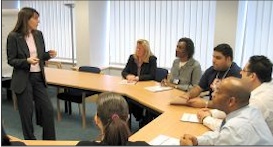 In one of the seminars I present we do a quick organisational vulnerability audit or risk assessment. Regularly, participants list key person dependency as one of their organisation’s critical vulnerabilities.
In one of the seminars I present we do a quick organisational vulnerability audit or risk assessment. Regularly, participants list key person dependency as one of their organisation’s critical vulnerabilities.
The fact is that people do get hit by buses, laid low by the ‘flu, headhunted by competitors, or worse…
How well are you equipped to handle a risk such as the loss of one of your key team members?
What if it happened in the middle of a crisis? Or is there a risk that such an event would actually precipitate a crisis for you? How much valuable information or experience would you lose if you lost one of your key people? Can you afford the risk?
Easy risk management
One of your easiest protective actions is to ensure that your key individual’s second-in-charge is being mentored, coached and developed as a future leader and is aware of organisational issues beyond their responsibility.
Coaching or mentoring at each level in your organisation is a powerful way to encourage your team leaders and managers to think beyond their day-to-day responsibilities and contribute more to your business. By recognising their value through a special coaching program you can also show your appreciation and develop their skills and commitment further at the same time as you reduce your own business risk.
Quote of Note
“There is no one who is successful today who has done the whole thing on their own …”
Jackie Stewart
I’ve heard some people say that training and developing people is a waste of resources because they might leave.
Smart leaders know that it is worse not to train and develop people, because there is a real risk they might stay!
See more details here on our Executive Coaching and Business Coaching Services
Investing in the development of your organisation’s current and future leaders is not just good risk negotiation, it’s essential to your long term business success.

 I learnt a lot about making connections when I was giving a presentation to an industry association conference in Osaka, Japan, a while back.
I learnt a lot about making connections when I was giving a presentation to an industry association conference in Osaka, Japan, a while back.




